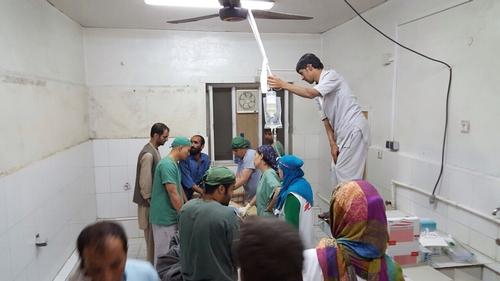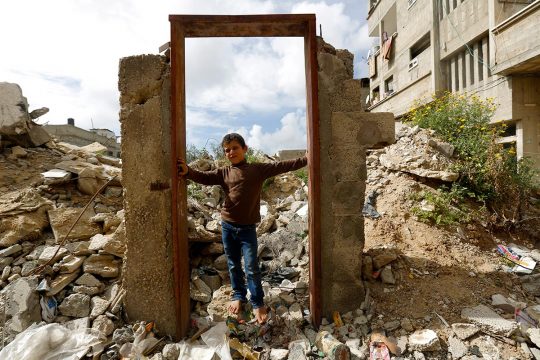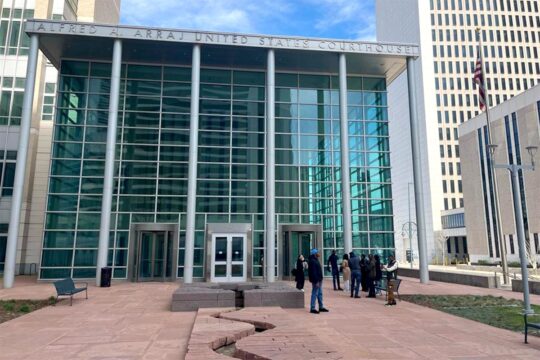As the 32nd International Conference of the Red Cross and Red Crescent ended in Geneva (on 10 December), ongoing armed conflicts continue to inflict horror and suffering on civilians. It is lamentable that much of the suffering is perpetrated by those with a primary obligation to respect the rules of conduct in armed conflict, notably the responsibility to protect civilians and only target military objectives. The death of patients and medical staff in a hospital in Kunduz, Afghanistan, is not an isolated case. In Yemen, the International Committee of the Red Cross (ICRC) condemned attacks on health facilities. In Syria, Syrian and allied forces have attacked health facilities. We continue to see similar developments in Nigeria, the Central African Republic, South Sudan, and elsewhere. In all of these areas, civilians are indiscriminately affected and in most cases they pay with their lives.
The international community is not, however, short of international instruments to protect civilians during armed conflicts and the infrastructures which are critical to the provision of social services, including schools, health centers and key government offices. The Geneva Conventions and subsequent Protocols prohibit all forms of violence to life directed against any civilian. Further, International Humanitarian Law makes it abundantly clear that collateral damage should not be disproportionate to the concrete and military gains anticipated from an attack. Similarly, international human rights law provides for minimum guarantees applicable to all individuals, and this include civilians and their properties during armed conflict. We have the necessary foundations to enhance our commitment to the protection of civilians and non-military infrastructures. We only need political will to ensure that we live up to these commitments.
Avoiding human loss
Admittedly, the changing nature and composition of warring parties present their own challenges in our responsibility to protect civilians effectively. While previously armed conflicts largely involved State militaries directly accountable to defined State authorities, today we see groups with no State affiliation and, for some of them, no willingness to abide by International Humanitarian Law, although they are key players in the armed conflicts. We further witness how technology is now assuming center stage in the conduct of armed hostilities. It is no longer an isolated scenario that States rely on drones and other military technologies which do not involve armed combatants on the ground. Despite the use of these technologies, civilians have not been spared. Warring parties take greater care to protect their armed forces personnel from harm than we have seen them do for civilians. It is therefore extremely important that the technological developments and capacity for precision that we see today should go hand in hand with enhanced ability to minimize and ultimately avoid human loss whenever possible.
It is important that those involved in armed conflicts, State and non-State actors alike, commit themselves to respect International Humanitarian Law and general human rights standards. The continued violations in Afghanistan, Libya, South Sudan, the Central African Republic, Syria and Yemen demonstrate the need to call to account the perpetrators of these crimes. This is especially crucial when considering that there are armed groups with little or no defined chain of command through which those who commit such violations may be held accountable. As stated by United Nations Secretary-General Ban Ki-moon, “through the ‘Human Rights Up Front’ initiative, we are committed to upholding the promise of ‘never again’ and drawing lessons from past failures. In practice, it means putting human rights, the protection of populations and the prevention of atrocity crimes at the center of our work.” He therefore urged the widest possible use of the Framework of Analysis for Atrocity Crimes developed by my Office to support prevention strategies at the national, regional and international levels.
Prosecute those destroying cultural heritage
The recent destruction of Palmyra cultural temples and the Timbuktu Mausoleum by armed groups in Syria and Mali respectively robs humanity of priceless treasures. We are pleased that for the first time the International Criminal Court is taking action against the suspected individuals involved in this heinous crime against cultural heritage in Mali. We hope that the international community will continue to provide support to the International Criminal Court and other international or regional institutions to prosecute those responsible for these violations and other international crimes. Similarly, States involved in armed conflict will be expected to continue taking necessary measures to ensure that military targets are clearly distinguished from civilians and civilian objects. May the unprecedented joint warning by United Nations Secretary-General Ban Ki-moon and President of the ICRC Peter Maurer about the impact of today's conflicts on civilians be heard? They are right to ask for urgent and concrete action to address human suffering and insecurity. It is urgent to act!






